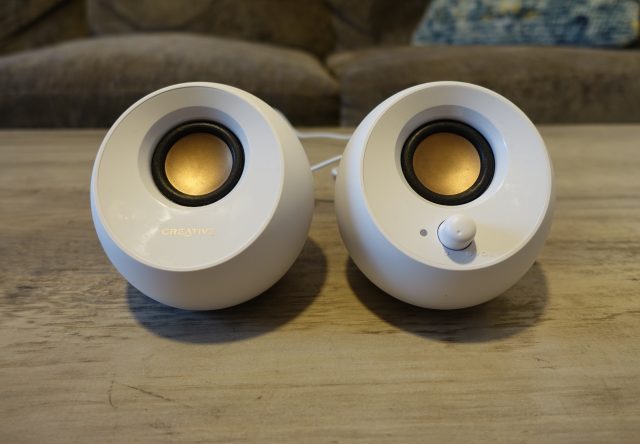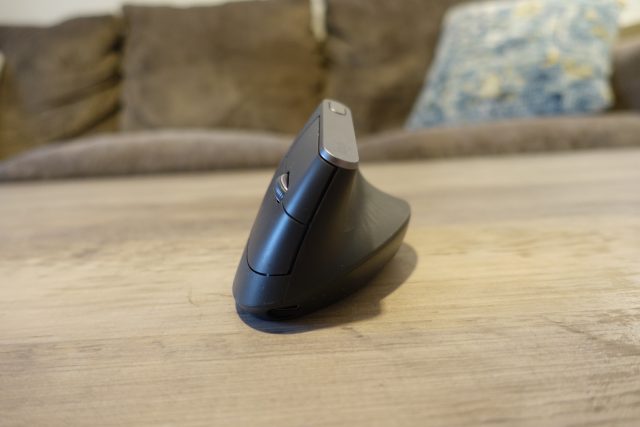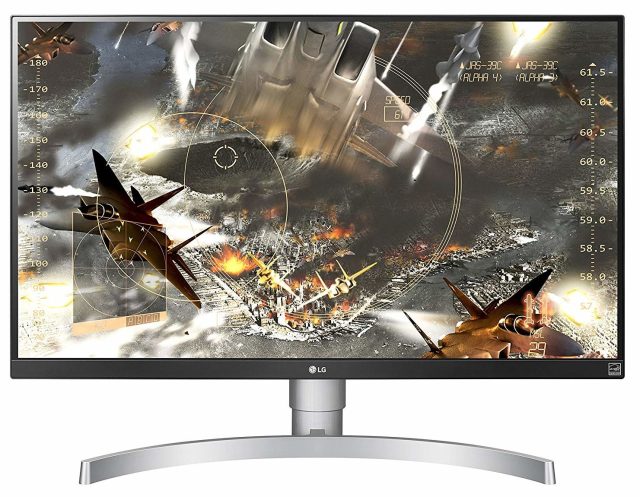
The first entry in our holiday gift guide dealt with gear your loved ones could use on the go. In contrast, today's edition centers all on tech that's more suited for the house—be it gadgets for improving a desk setup or an A/V upgrade for the living room. Like with all our guides, we've put in a year's worth of testing in order to make a handful of recommendations that may actually delight or prove useful to your favorite people. Have a look for yourself below.
Note: Ars Technica may earn compensation for sales from links on this post through affiliate programs.
Creative Pebble


Creative Pebble
Now, any speakers this small and cheap come with caveats. The Pebble pair powers through a basic USB-A connector, so it’ll never give you massive sound. It can distort slightly at maximum volumes, it’s not immune to sibilance in the highs of some tracks, and deep sub-bass is more implied than truly impactful. Much of this is just physics.
That said, the Pebble speakers get much louder than your average laptop or desktop speakers, with a noticeably wider soundstage—naturally, since it’s a stereo pair—and surprisingly rich mids. Vocals and other high-mids are presented with good clarity, and bass is still present on most tracks thanks to the pair of passive radiators on the back of the speakers. It’s a fuller and more balanced sound than usual for this price range.
The Pebble leaves you with a couple of extra wires to manage, but what’s there is dead simple to set up: just plug the USB-A connector into an outlet for power and hook them up to a device’s 3.5mm jack. And while good design is subjective, I’d say the Pebble looks clean for something made from plastic. They’ve also given us zero reliability issues after six months of use. Put it all together and you have a clear upgrade on a desktop’s default sound for not a lot of money.
Logitech MX Vertical


Logitech MX Vertical
Still, more and more people are switching to these things for a reason. If you know someone who has complained about wrist pain in the past—or just wants to change up their setup—the Logitech MX Vertical is probably the most polished example of a vertical mouse to date.
There is a learning curve to it: the click buttons and scroll wheel are located on the right-hand side, and the whole thing is meant to be held as if you’re shaking a hand. Everyone’s hands are different, but for me, all the buttons here feel like they're in the right spot. While you have to rest your arm at a different angle while using it, I’ve found that holding the mouse in this fashion has made it more natural to keep my wrist straight while making movements. Despite some initial skepticism, it has become my primary mouse after three months of testing.
It helps that the MX Vertical performs well. It has a 4,000 DPI sensor that has given us no issues with accuracy or stuttering to date, a battery Logitech rates at four months that we haven't yet had to charge, and a USB-C port for quickly recharging the device and connecting it to a computer. It works over Bluetooth or a USB-A receiver, the textured sides of the mouse give it some extra grip, and Logitech’s settings app is spare but easy to manage. There are four customizable buttons, including one for adjusting pointer speed on the fly and two on the left side that sit in a natural place for the thumb. (I’ve tied them to copy and paste commands, personally.)
Again, this kind of recommendation is particularly subjective. For office work, Logitech’s MX Master 2S has a similarly premium feel in a more traditional shape. Something this bulky, which encourages shorter mouse movements, is also horrible for gaming—the company’s G502 Proteus Spectrum is more flexible there. There's no left-handed model, either, which is harsh. But if you know a righty who can’t shake their carpal tunnel or is just open to giving vertical mice a try, the MX Vertical might lend them a hand.
LG 27UK650-W 4K Monitor

4K monitors are starting to make more sense. Prices for the sharper panels have steadily come down in recent months, many of the scaling issues that plagued computer software in the past have been rectified, and the amount of worthwhile 4K content continues to steadily grow. The higher resolution makes more sense on a monitor than a TV: it gives you more space to work for opening various windows, and physically sitting closer to a 4K screen makes it easier to appreciate the added sharpness.

LG 27UK650-W
If you want to help someone upgrade to a more future-proof monitor, consider the LG 27UK650-W. It’s a 27-inch panel, which is the sweet spot for most, with an IPS LCD display. It doesn’t have the deep blacks of an OLED panel, naturally, and, like most current monitors, its touted “HDR” features don’t really result in a particularly dynamic image. But its colors are good and accurate, it gets bright enough for non-HDR purposes, and its viewing angles are solid. With a 60Hz refresh rate, it isn’t the best for high-end gaming, but response times are fast, and input lag isn’t an issue. The panel also supports AMD’s FreeSync tech for limiting instances of screen tearing with compatible AMD devices.
The design of the 27UK650-W looks nice (though the total lack of USB ports may annoy some), the stand could be a little more flexible, and the hardware uses a good amount of plastic. There are no built-in speakers, either. Still, for mainstream purposes, the image here is strong enough to make this a good deal in the $400 range. Just make sure whoever you’re buying for has a computer strong enough to push 4K in the first place.
reader comments
120